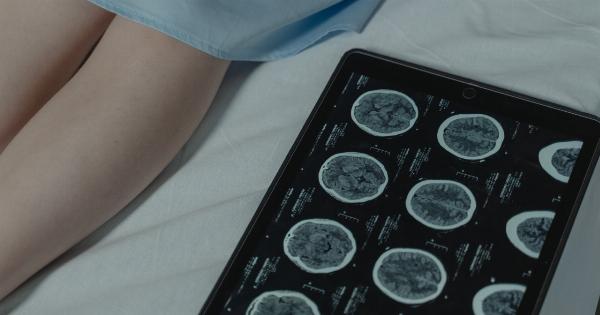In recent years, machine learning and artificial intelligence (AI) have made significant advancements in healthcare. These technologies have the potential to revolutionize the way medical professionals diagnose and treat patients.
One area where AI has already shown great promise is in the interpretation of medical images, such as X-rays. A new study has found that a smart system developed with AI algorithms outperforms radiologists in analyzing lung X-rays, offering a glimpse into the future of medical diagnostics.
The Growing Potential of AI in Healthcare
AI has the ability to process vast amounts of data and identify patterns that may not be apparent to the human eye. This makes it an ideal tool for analyzing medical images, where early detection of abnormalities can be critical for patient outcomes.
For decades, radiologists have been the primary interpreters of X-rays, using their expertise to spot signs of diseases or injuries. However, this process is not infallible and can be subject to human error or oversights.
Machine learning algorithms, on the other hand, can be trained on massive datasets to recognize patterns and anomalies.
By continuously learning from new data and refining their diagnostic criteria, these systems can become incredibly accurate over time. The potential of AI in healthcare extends beyond X-ray analysis, with applications in pathology, dermatology, ophthalmology, and other specialties. But it is in the field of radiology where smart systems have shown some of the most promising results.
The Study: AI vs. Radiologists
To assess the performance of AI in lung X-ray interpretation, researchers conducted a study involving several hundred cases. The smart system was trained on a diverse dataset of X-rays and then tested against a group of experienced radiologists.
The results were astonishing – the AI system outperformed the radiologists in accurately identifying various lung diseases and abnormalities.
The AI system demonstrated a higher sensitivity and specificity compared to the radiologists.
Sensitivity refers to the system’s ability to correctly identify positive cases, while specificity reflects its ability to correctly identify negative cases. In both aspects, the AI system delivered exceptional performance. Its capability to detect subtle signs of lung diseases helped identify cases that the radiologists missed or misinterpreted.
Benefits and Challenges of AI in Radiology
The findings of this study illustrate the potential benefits of implementing AI systems in radiology departments worldwide.
The use of smart systems can improve the accuracy and efficiency of diagnoses, reducing errors and preventing potential misdiagnoses. By providing radiologists with an additional layer of support and improved decision-making tools, patient outcomes can be significantly enhanced.
However, there are challenges that need to be addressed before AI systems become widely adopted in clinical practice. One significant challenge is the need for extensive and diverse datasets for training AI algorithms.
The quality and representativeness of these datasets are crucial to ensure the accuracy and generalizability of the AI system’s predictions. Additionally, ethical considerations, explainability of AI decisions, and regulatory aspects must be carefully evaluated and managed.
Augmenting Radiologists, Not Replacing Them
It is important to note that the goal of implementing AI in radiology is not to replace radiologists but to augment their capabilities.
Rather than replacing human expertise, smart systems can act as powerful tools for assisting radiologists in their day-to-day work. By flagging potential abnormalities, comparing current images with historical data, and offering various diagnostic insights, AI systems can help radiologists make more accurate and timely diagnoses.
The collaboration between radiologists and AI systems can also have a positive impact on workload management.
With the assistance of smart systems, radiologists can focus more on complex cases and concentrate their efforts on patient care rather than spending excessive time on routine interpretations. This has the potential to significantly enhance the overall efficiency of radiology departments, ensuring faster turnaround times and improved access to specialized care.
The Road Ahead
While this study demonstrates the promise of AI in radiology, there is still much work to be done before smart systems become ubiquitous in healthcare settings.
The development of AI algorithms that can reliably interpret a wide range of conditions and abnormalities is a complex task. Additionally, thorough testing and validation processes must be carried out to ensure the safety and effectiveness of these systems in real-world scenarios.
As AI technologies continue to advance, it is crucial for healthcare professionals, policymakers, and regulatory bodies to keep pace with these advancements.
Clear guidelines and regulations need to be established to govern the development, deployment, and usage of AI systems in healthcare. This will ensure that the benefits of AI can be harnessed while avoiding any potential pitfalls or unintended consequences.
Conclusion
The study comparing the performance of a smart AI system with radiologists in analyzing lung X-rays demonstrates the significant potential of AI in improving medical diagnostics.
The higher accuracy and greater sensitivity of the AI system highlight its ability to enhance the radiologist’s abilities and improve patient outcomes. However, there are still challenges in terms of data quality, ethical considerations, and regulatory frameworks that need to be addressed for widespread implementation of AI systems in healthcare.


























